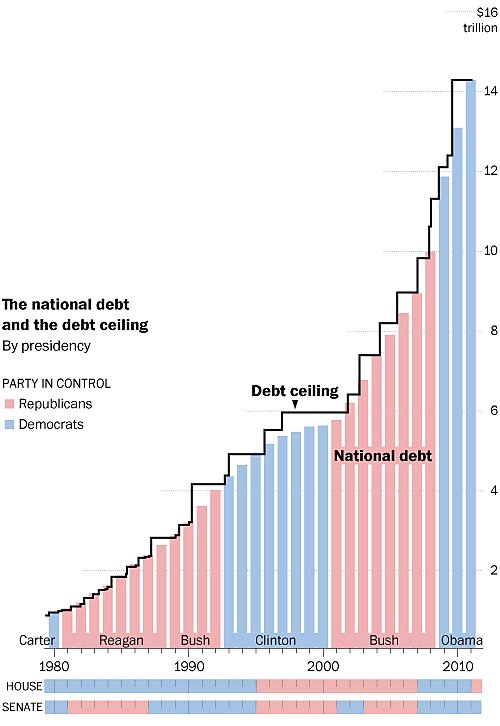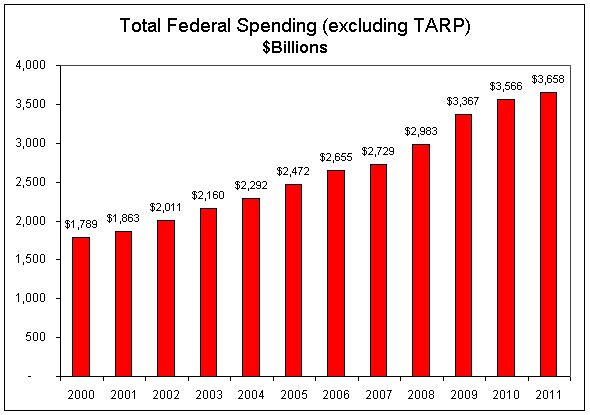It’s being reported that in his 2013 budget President Obama will propose to increase spending now and reduce the deficit some day. Isn’t that what every budget promises these days? As I noted last summer during the debt ceiling fight at the Britannica Blog, fiscal conservatives should be very skeptical of plans and proposals that promise to cut spending some day—not this year, not next year, but swear to God some time in the next ten years:
As the White Queen said to Alice, “Jam to-morrow and jam yesterday—but never jam to-day.” Cuts tomorrow and cuts in the out-years—but never cuts today.
We’ve become so used to these unfathomable levels of deficits and debt—and to the once-rare concept of trillions of dollars—that we forget how new all this debt is. In 1981, after 190 years of federal spending, the national debt was “only” $1 trillion. Now, just 30 years later, it’s past $15 trillion. So here’s a graphic representation from the Washington Post (now about half a trillion behind) of debt dysfunction:
Those are the kind of numbers that caused the Tea Party movement and the Republican victories of 2010. And where did all this debt come from? As the Tea Partiers know, it came from the rapid increase in federal spending over the past decade:
Annual federal spending rose by a trillion dollars when Republicans controlled the government from 2001 to 2007. It has risen another trillion during the Bush-Obama response to the financial crisis. So spending every year is now twice what it was when Bill Clinton left office 10 years ago, and the national debt is almost three times as high. Republicans and Democrats alike should be able to find wasteful, extravagant, and unnecessary programs to cut back or eliminate. And yet many voters, especially Tea Partiers, know that both parties have been responsible. Most Republicans, including today’s House leaders, voted for the No Child Left Behind Act, the Iraq war, the prescription drug entitlement, and the TARP bailout during the Bush years. That’s one reason that even voters outraged at the Obama-Reid-Pelosi spending surge can’t quite get enthusiastic about Republicans.
The problem on Capitol Hill is spending, deficits, and debt. Members of Congress need to tell the president that you don’t rein in out-of-control spending by increasing it. And if voters want members of Congress to insist on cuts, they’re going to have to let their representatives know that.


